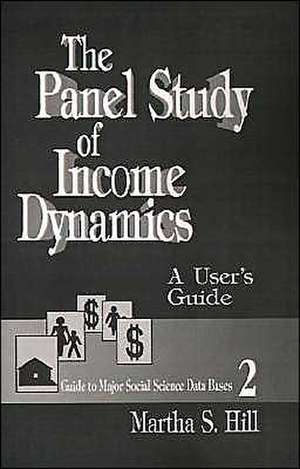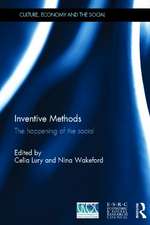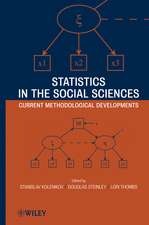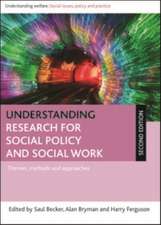The Panel Study of Income Dynamics: A User's Guide: Guides to Major Social Science Data Bases, cartea 2
Autor Martha S. Hillen Limba Engleză Paperback – 8 dec 1991
Preț: 433.23 lei
Preț vechi: 509.68 lei
-15% Nou
Puncte Express: 650
Preț estimativ în valută:
82.90€ • 86.95$ • 69.01£
82.90€ • 86.95$ • 69.01£
Carte tipărită la comandă
Livrare economică 01-15 aprilie
Preluare comenzi: 021 569.72.76
Specificații
ISBN-13: 9780803942301
ISBN-10: 0803942303
Pagini: 104
Dimensiuni: 140 x 216 x 9 mm
Greutate: 0.15 kg
Ediția:1
Editura: SAGE Publications
Colecția Sage Publications, Inc
Seria Guides to Major Social Science Data Bases
Locul publicării:Thousand Oaks, United States
ISBN-10: 0803942303
Pagini: 104
Dimensiuni: 140 x 216 x 9 mm
Greutate: 0.15 kg
Ediția:1
Editura: SAGE Publications
Colecția Sage Publications, Inc
Seria Guides to Major Social Science Data Bases
Locul publicării:Thousand Oaks, United States
Cuprins
Introduction
Study Design
Field Procedures
Data Preparation
Data Quality
Content
Data Files
Data Analysis
Getting Started
Study Design
Field Procedures
Data Preparation
Data Quality
Content
Data Files
Data Analysis
Getting Started
Descriere
Income, employment, family composition, health and retirement - are all topics on which the Panel Study of Income Dynamics (PSID) has annually gathered information from more than 4,800 US households. Hill sets out to make this wealth of data more accessible to researchers by reviewing key analysis issues and identifying key variables for the user. Several detailed analysis examples show how to make use of the PSID to estimate earnings regressions, changes in women's income following divorce and the correlation between parents' income and a child's adult income, as well as to create a longitudinal poverty measure.












